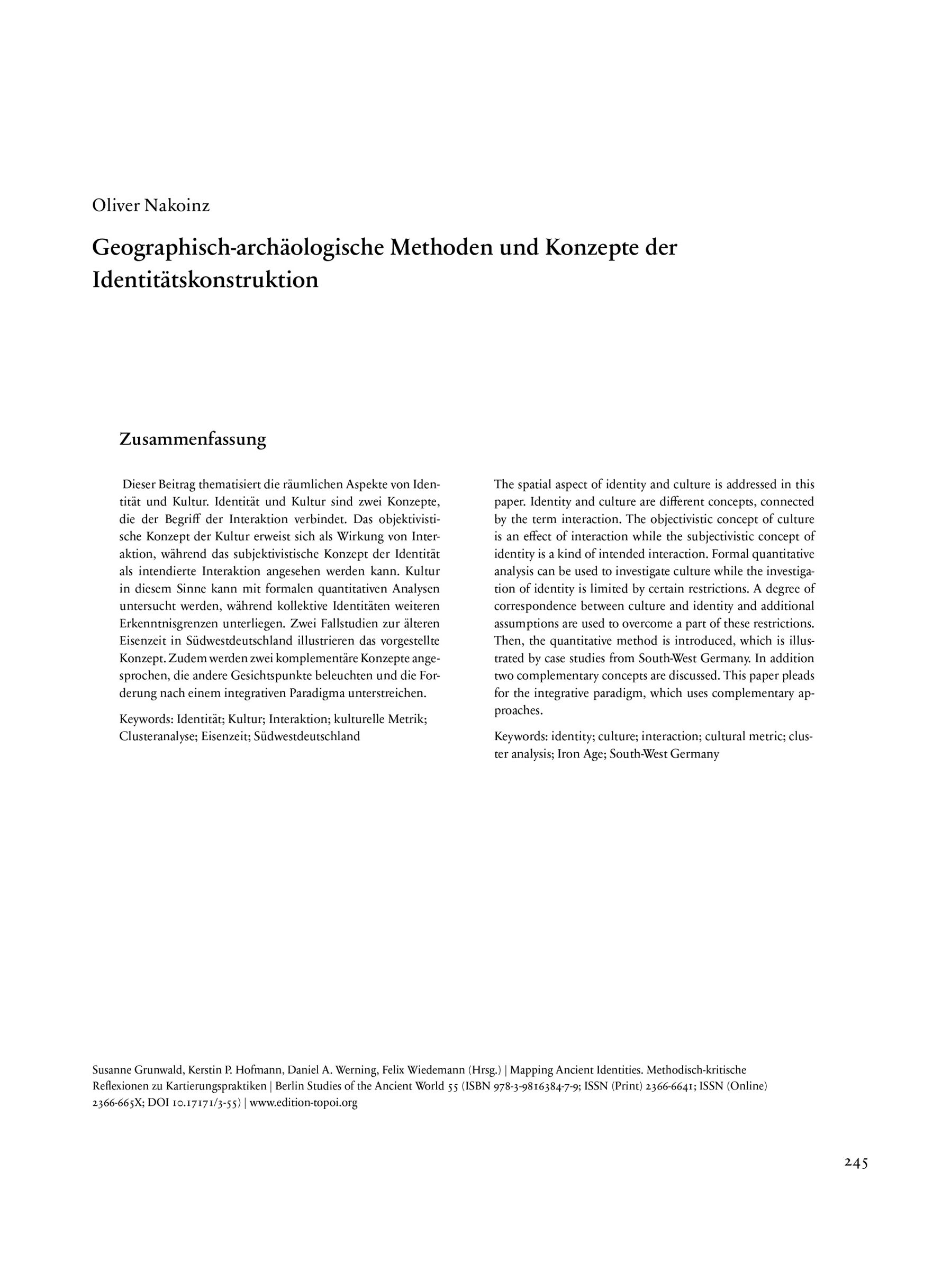Geographisch-archäologische Methoden und Konzepte der Identitätskonstruktion
The spatial aspect of identity and culture is addressed in this paper. Identity and culture are different concepts, connected by the term interaction. The objectivistic concept of culture s an effect of interaction while the subjectivistic concept of identity is a kind of intended interaction. Formal quantitative analysis can be used to investigate culture while the investigation of identity is limited by certain restrictions. A degree of correspondence between culture and identity and additional assumptions are used to overcome a part of these restrictions.T hen, the quantitative method is introduced, which is illustrated by case studies from South-West Germany. In addition two complementary concepts are discussed. This paper pleads for the integrative paradigm, which uses complementary approaches.
Dieser Beitrag thematisiert die räumlichen Aspekte von Identität und Kultur. Identität und Kultur sind zwei Konzepte, die der Begriff der Interaktion verbindet. Das objektivistische Konzept der Kultur erweist sich als Wirkung von Interaktion, während das subjektivistische Konzept der Identität als intendierte Interaktion angesehen werden kann. Kultur in diesem Sinne kann mit formalen quantitativen Analysenuntersucht werden, während kollektive Identitäten weiteren Erkenntnisgrenzen unterliegen. Zwei Fallstudien zur älteren Eisenzeit in Südwestdeutschland illustrieren das vorgestellte Konzept. Zudem werden zwei komplementäre Konzepte angesprochen, die andere Gesichtspunkte beleuchten und die Forderung nach einem integrativen Paradigma unterstreichen.

